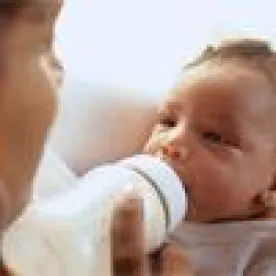Takeaway: Disclosure of a limited number of configurations in a prior art reference may support an obvious to try rationale for a conclusion of obviousness and being limited to only one particular configuration will not make that conclusion any less obvious.
In its Final Written Decision, the Board held that Petitioner proved by a preponderance of the evidence that all challenged claims 15-22 of the ’876 patent are unpatentable. The Board also dismissed Patent Owner’s Motion to Exclude Evidence.
The ’876 patent “relates to pants-like absorbent garments, e.g., children’s diapers and training pants, with refastenable side seams,” and in particular, discloses “[a] flat orientation of resilient fastening components in the tucked position prevents creases from occurring in the fastening components, thereby preserving the available fastener seam strength and making the fasteners less likely to disengage during product application and wear.” Inter partes review was instituted based on alleged obviousness of claims 15-20 and 22 over Widlund and Toyo, and obviousness of claim 21 over Widlund, Toyo, and Kuske.
The Board first addressed claim construction, stating that claims in an unexpired patent are given their broadest reasonable construction in light of the specification. In its Decision on Institution, the Board had construed “the first back side panel being folded twice and the first front side panel being folded once” as meaning that “the front and back side panels each have a first fold where the side panels are folded over the absorbent assembly, and the back side panel has a second fold different from the first fold in the back side panel.” The parties did not dispute the construction, and the Board decided not to depart from the definition.
The Board then turned to the asserted grounds of unpatentability. With respect to the first ground of obviousness based on Widlund and Toyo, the Board indicated that Widlund does not disclose “folding or packing instructions,” but that Toyo “discloses alternative folding configurations.” The Board was persuaded that it would have been obvious “to fold the side panels of Widlund’s training pants over the absorbent assembly in preparation for packaging based on Toyo’s suggestion.” The Board disagreed with Patent Owner’s argument that the “obvious to try” rationale was unsupported because Petitioner did not identify the finite number of predictable solutions. The Board noted that Petitioner “plainly relies on the limited number of configurations disclosed by Toyo as suitable for folding disposable underpants,” and that being “limited to one particular suitable folding configuration disclosed by Toyo does not make that folding configuration any less obvious.”
With respect to Patent Owner’s arguments about unpredictability, the Board was not persuaded. In particular, the Board noted that Patent Owner’s analysis and expert testimony did “not reflect accurately Widlund’s teachings, Toyo’s teachings, or Petitioner’s stated rationale” and were “based on a series of wrong premises.” The Board accorded little weight to Patent Owner’s expert testimony and credited Petitioner’s expert testimony as more compelling. Thus, the Board was persuaded by a preponderance of the evidence that claim 15, and dependent claims 16-20 and 22, are unpatentable.
The Board also noted in a footnote that to the extent Patent Owner asserted that Petitioner’s arguments lacked “expert witness testimony as to what the teachings of the cited art would reasonably convey to one of ordinary skill in the art,” expert testimony “is not a prerequisite for establishing unpatentability by a preponderance of the evidence.” This is especially the case where “the invention and prior art references are directed to relatively straightforward and easily understandable technology.”
With regard to the second ground that claim 21 is obvious over Widlund, Toyo, and Kuske, Patent Owner only argued that claim 21 is patentable based on its dependence from claim 15. The Board was persuaded that claim 15 is unpatentable and that claim 21 is obvious further in view of Kuske.
Turning to Patent Owner’s Motion to Exclude, the Board dismissed the Motion because it did not rely upon any of the evidence subject to the motion in its decision.
First Quality Baby Products, LLC v. Kimberly-Clark Worldwide, Inc., IPR2014-00169
Paper 41: Final Written Decision
Dated: May 28, 2015
Patent: 8,579,876 B2
Before: Toni R. Scheiner, Francisco C. Prats, and Denise M. Pothier
Written by: Scheiner



 />i
/>i
